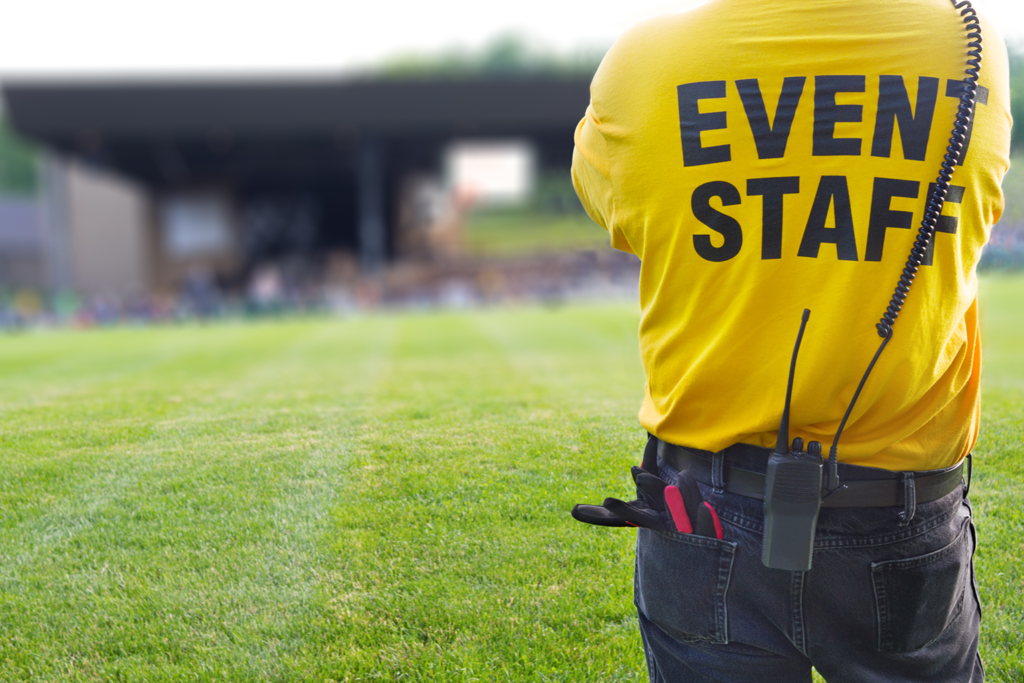A strong event crowd management plan is imperative in situations of large groups of people – a necessity tragically highlighted by recent crowd-related disasters. In November, ten concertgoers were killed and dozens injured in a crowd surge at the sold-out Astroworld Music Festival in Houston. The tightly packed crowd of 50,000 attendees compressed towards the stage, resulting in the devastating loss of life and multiple lawsuits against the performer and the concert organizers.
Excitement levels are at an all-time high after years-long delays and cancellations of events due to the pandemic. Fortunately, there are many ways event planners can reduce the likelihood of hazardous incidents. Risk assessment and emergency preparation are critical facets of safely managing large crowds.
This blog will outline the main considerations for devising a strong event crowd management plan so that your business can run a safe and successful event that protects attendees and employees alike.
An event crowd management plan begins with staff and preparedness
Bright lights, energized crowds, and onstage performances all help generate a memorable night out. However, managing a safe event for fun-seeking crowds begins with careful planning. The first step in preparing an event crowd management plan is to ensure venue staff are appropriately trained to prevent and navigate any hazardous situations. Event organizers must allow sufficient time to gather information, consult and obtain advice, and establish adequate precautions to manage crowd safety. Technical staff, security, and other employees should be involved in planning, along with various local authorities like emergency services.
The Occupational Safety and Health Administration (OSHA) enforces health and safety laws that protect employees, no matter the establishment or facility they work within. This means most crowd control guidelines are applicable to event venues such as amusement parks, fairs, concerts, and more, holding large sales.
Before the event, employees should be adequately trained to keep crowds under control. Any staffing plan must clarify the number of workers needed and how these employees should be distributed throughout a venue.
Additionally, fire and police agencies should be aware of crowd size and other factors well beforehand. Thoughtful pre-event safety emergency planning encompasses hazards such as overcrowding, stampedes, fire, or even violent behavior. Thorough staff training is vital to ensure your emergency plan is implemented without delay or mistake.
Also read:
Why Safety Signage at Amusement Parks is Critical
How to plan for large-scale crowd control during an event
While educating your staff is a critical part of any event crowd management plan, implementing day-of measures to protect attendees is just as important. Planning a large event for a crowd of any size requires overseeing the following details:
- Venue capacity
- Location of entrances and exits
- Means of escape in the event of an emergency
- Provisions for special-needs guests
- Maintenance of turnstiles and other equipment
- Access to first-aid facilities
- Preparation for adverse weather
Considering the crowd-related tragedies of recent years, it’s no surprise that safety is top-of-mind for people attending public events or out in large crowds. There are many preventative measures a venue can take to protect guests.
Set up barricades, rope lines, and other management devices well before customers arrive. Proper signage is another must-have. Ensure that all emergency exits are clearly marked during and after the event. Signs should include a number to call or text if attendees notice a possible hazard or are in a situation where they need help and a tip line for anonymous reporting. Bathrooms, tabletops, or even ticket stubs are good ways to get this message across. These measures reassure attendees that their safety is a priority for the venue and event managers.
Also read:
Inspire Guest Confidence with Effective Communication
Follow up with attendees to improve safety precautions
Event safety plans should be an ongoing work in progress for all planners and venues. Event planners can utilize phone numbers or emails provided at booking to follow up with attendees after the event for a brief safety check-in or survey. Questions might include:
- How safe did attendees feel at the event?
- If any situations arose, did security handle the problem responsibly?
- What recommendations do attendees have on making future events even safer?
Though some event issues are ultimately unavoidable, a smart event crowd management plan can minimize the dangers. Best-in-class preparation, training, and guest resources will ideally bring those big crowds back for a future show or event.
The right insurance provider will understand your business risks and help you prepare for the unexpected. Contact McGowan for more information about how Amusement & Entertainment Insurance can protect your business.


